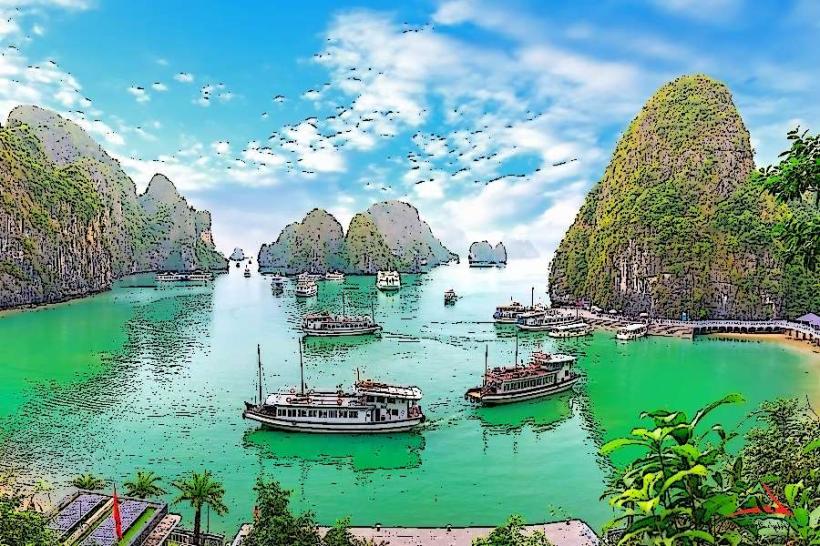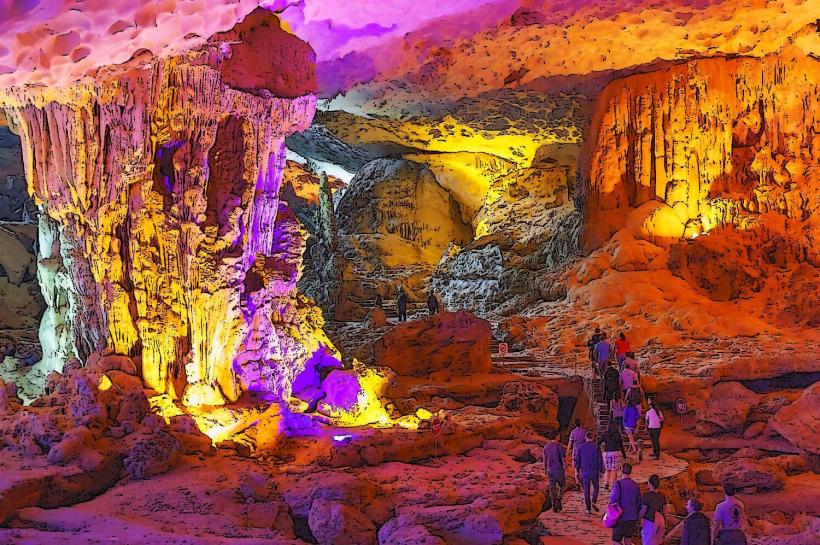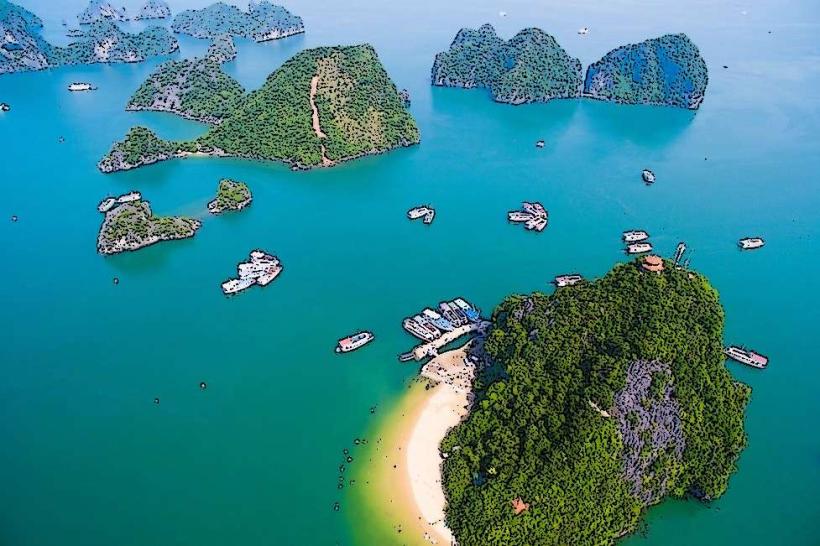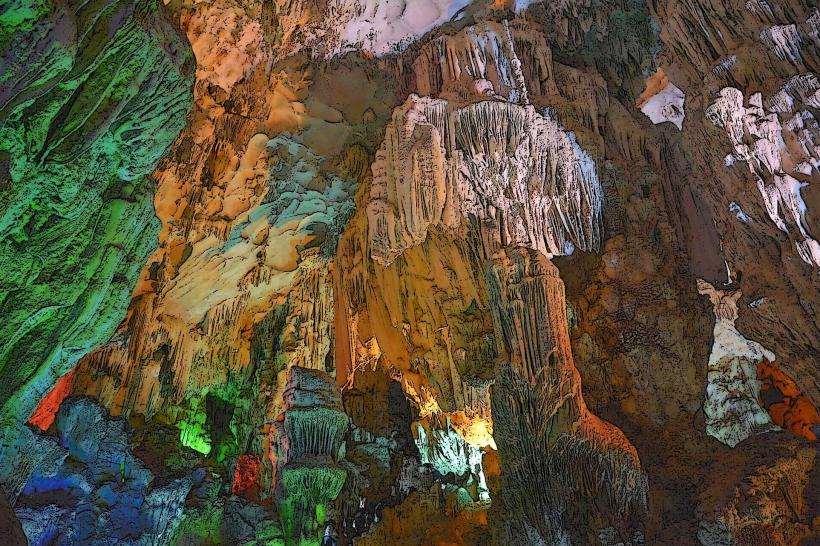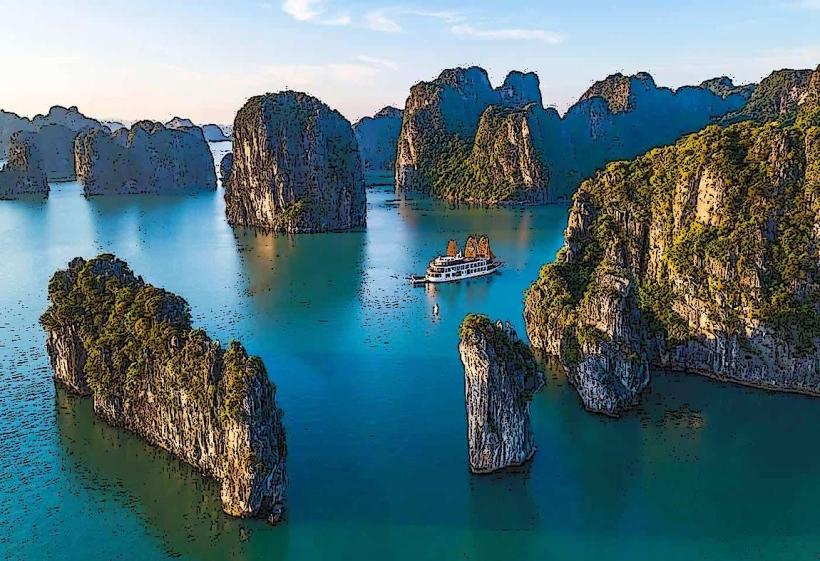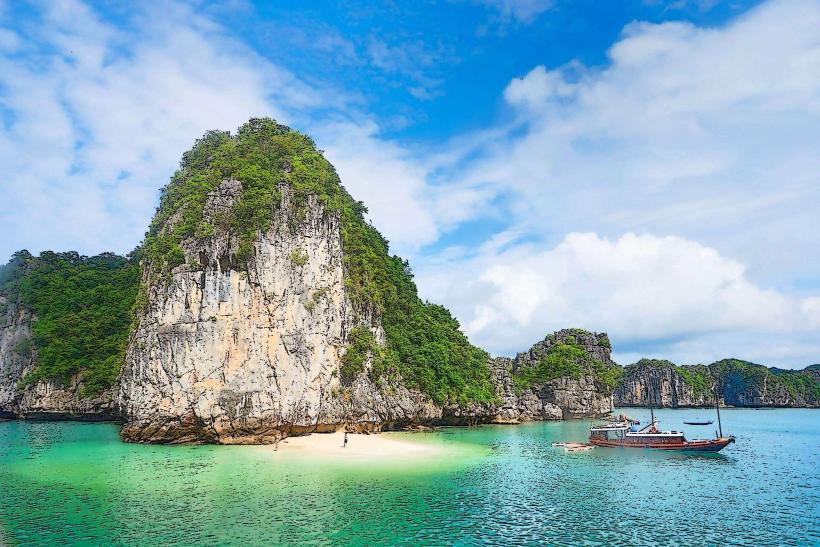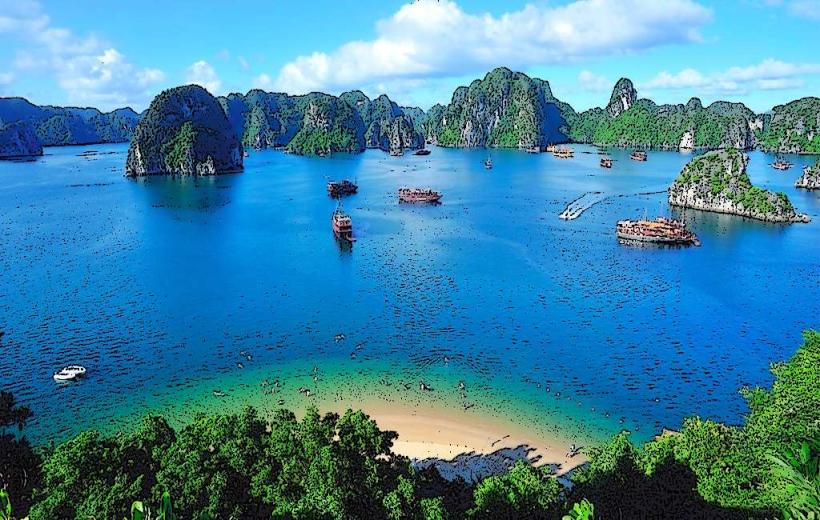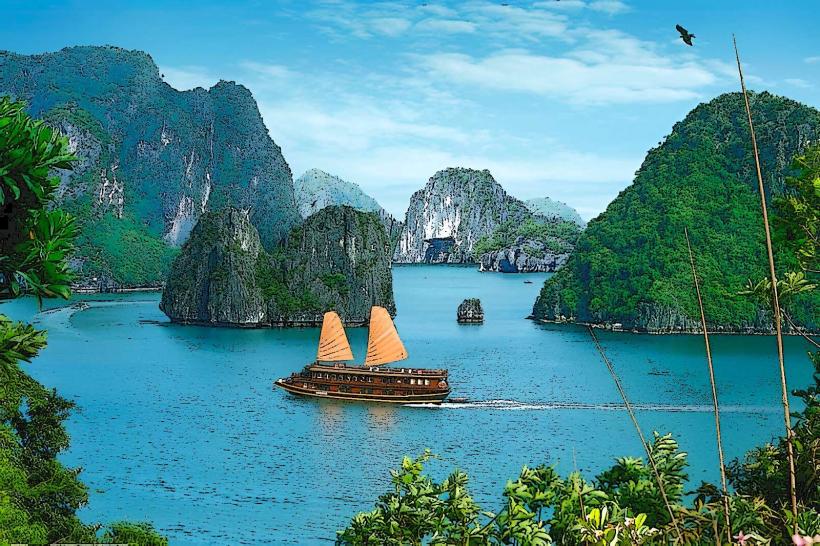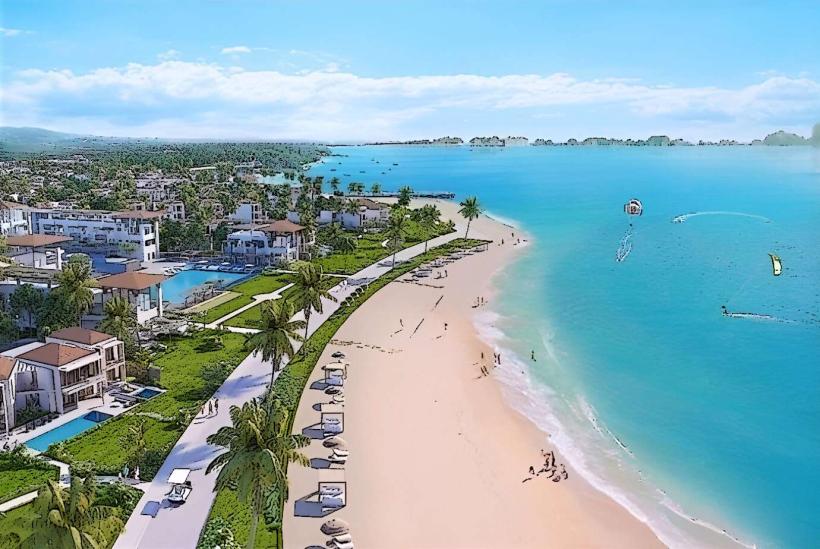Information
City: Ha LongCountry: Vietnam
Continent: Asia
Ha Long, Vietnam, Asia
Overview
Ha Long, a coastal city in northern Vietnam, is known for its breathtaking landscapes and the iconic Ha Long Bay, where limestone cliffs rise sharply from emerald waters, at the same time the city is the doorway to one of Vietnam’s best-known UNESCO World Heritage Sites, where towering limestone karsts rise from emerald waters, dotted with tiny islets and drifting fishing villages.Ha Long, which means “Descending Dragon,” takes its name from a legend in Vietnamese folklore about a mighty dragon that dove into the sea, sending up waves and pulling the water back to uncover the bay’s towering limestone cliffs, subsequently ha Long sits in Quang Ninh Province, about 170 kilometers-roughly a three-hour drive-east of Hanoi, Vietnam’s capital.The city sits on the edge of the Gulf of Tonkin, tucked into Vietnam’s northern coast where the sea smells faintly of salt, not only that ha Long’s not a huge city-only about 250,000 to 300,000 people live there-making it modest in size compared to Vietnam’s busier urban hubs.In Ha Long, people mainly speak Vietnamese, but you’ll hear plenty of English in the busy tourist spots, especially near the waterfront cafés that draw travelers from around the world, then ha Long’s history runs deep-it’s been home to people for thousands of years, with traces of Bronze Age dwellings still found in its rocky caves.In ancient and prehistoric times, Ha Long Bay sheltered cultures like Cai Beo and Xich Tho, leaving behind traces in the form of shell mounds and stone tools tucked deep inside its coastal caves, on top of that during the French colonial era, European travelers stumbled upon Ha Long’s striking limestone cliffs and emerald waters, and it soon turned into a favored escape for France’s upper class.In the past few decades, Ha Long has transformed into one of Vietnam’s premier tourist spots, its emerald waters and jagged limestone cliffs drawing visitors from Hanoi and beyond, moreover this surge in interest has fueled recent roads, sleek hotels, and bustling services for travelers from both near and far.Ha Long sits in Vietnam’s northeast, its coastline stretching along the calm, green waters of the Gulf of Tonkin, on top of that mountains rise on one side and bays glitter on the other, with Ha Long Bay-its emerald water dotted with limestone peaks-stealing the show.Ha Long Bay, a UNESCO World Heritage Site, spans 1,553 square kilometers and holds more than 1,600 limestone islands and islets, their jagged cliffs rising straight from the emerald water, in addition jagged cliffs shoot up from the water, their gloomy faces catching the light and turning the whole scene into something dreamlike.The bay shelters hidden caves, shadowy grottoes, and miniature villages that drift gently on the water, after that Tuan Chau Island, set in the heart of Ha Long Bay, draws visitors with its sleek luxury resorts, soft sandy beaches, and lively water sports.It’s among the most built-up spots for visitors in the region, with cafés spilling light onto the cobblestone streets at night, besides Cat Ba Island sits southwest of Ha Long Bay, famous for its rugged cliffs, quiet beaches, and the lush trails of its National Park.Many people come here for outdoor thrills-hiking through pine-scented trails, scaling rugged cliffs, or paddling across a glassy lake, therefore ha Long’s tropical monsoon climate brings clear wet and dry seasons.From May to August, the air turns thick with heat, and temperatures climb to 30–35°C (86–95°F), along with during this time, expect heavy rain, often rolling in as sudden afternoon showers or crackling thunderstorms.Winter, from November to February, stays cool and dry, with crisp mornings and temperatures between 15 and 20°C (59–68°F), furthermore misty air can drift in over the bay, blurring the horizon, and now and then a freezing front from the north sweeps through, leaving the air sharp and cool.The best time to visit Ha Long is in spring, from March to April, or autumn, from September to October, when the air feels mild, rain is rare, and the sky often stretches blue and shining above the bay, also in Ha Long, culture flows from the sea-it’s rooted in antique fishing traditions and shaped by the bay’s wind-salted air and towering limestone cliffs.People here are known for their easy warmth-you might get a wave from a stranger on the dock-and the economy leans heavily on fishing, tourism, and other maritime work, then in Ha Long Bay, several floating villages drift gently on the waves, where local fishermen still live and cast their nets right from their wooden boats, relatively To be honest, Villages like Cua Van and Vung Vieng let you witness age-aged fishing methods in action, from woven bamboo traps to nets cast at dawn, passed down through countless generations, simultaneously every summer, the Ha Long Carnival bursts to life with colorful costumes, lively music, and graceful dances that celebrate the region’s vibrant culture.Each year, the Tuan Chau International Boat Race Festival bursts to life, honoring Ha Long’s maritime heritage with the slap of paddles against the bay, as well as ha Long’s economy revolves around tourism, fishing, and the maritime trade, from bustling seafood markets by the docks to tour boats skimming across the bay.The city draws travelers from across the country and around the world, all eager to witness Ha Long Bay’s towering limestone cliffs and emerald waters, therefore tourism fuels Ha Long’s economy, drawing millions each year to sail its emerald waters, wander limestone caves, and take in the bay’s striking beauty.The city’s skyline has changed swift, with modern roads, gleaming hotels, resorts, and tour hubs popping up to meet the surge in visitors, furthermore fishing still plays a vital role in Ha Long’s economy, putting fresh squid on dinner tables and providing steady work for locals while fueling the city’s bustling seafood trade.Ha Long Bay’s waters teem with life, from darting silver fish to drifting clouds of jellyfish, subsequently maritime industries thrive in Ha Long, where shipyards clang with the sound of hammers and welders, driving much of the region’s economy.Ha Long is best known for its breathtaking scenery, especially Ha Long Bay, where limestone cliffs rise straight from the water and draw most of the visitors, meanwhile other highlights include Ha Long Bay, with its misty limestone cliffs - the main draw for most visitors.The bay brims with towering limestone cliffs, emerald-green islands, and water so clear you can observe fish flicker beneath the surface, moreover you can hop on a boat cruise, paddle a kayak across the calm water, or slip into the cool, shadowy caves and grottoes scattered through the bay.In Ha Long Bay, travelers flock to spots like Sung Sot Cave, Ti Top Island, and the quiet, emerald waters of Luon Cave, likewise ha Long Bay Cruises: Many travelers choose to spend a night aboard a traditional wooden junk, drifting past limestone cliffs and quiet coves in comfort and style.As you can see, Tuan Chau Island draws visitors with its sandy beaches, sleek resorts, and high-end services, from seaside spas to sunset cruises, what’s more it’s perfect if you want to spend your days kayaking in the surf, playing volleyball on warm sand, and unwinding with a soothing spa massage.Perched on the southwest edge of Ha Long Bay, Cat Ba Island offers a lush escape, with golden beaches, winding hiking trails, and the wild beauty of Cat Ba National Park, what’s more it’s a perfect location to spend the day hiking forest trails, scaling sun-warmed cliffs, or diving into the cool, clear water.Ha Long Park is a lively amusement and entertainment complex just minutes from the heart of Ha Long, where radiant rides and music fill the air, besides you’ll find a towering Ferris wheel, lively theme parks, and plenty of spots to relax or play.
Author: Tourist Landmarks
Date: 2025-10-29
Landmarks in ha-long

